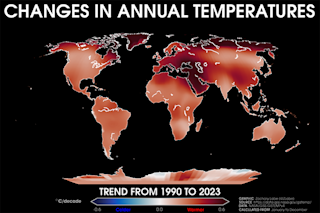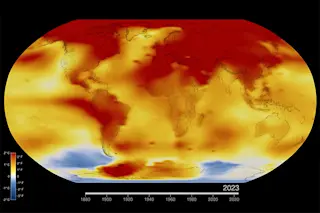A comparison of sea surface temperature anomalies in the Pacific Ocean for two seven-day periods: Dec. 28, 1998 to Jan. 3, 1999; and Dec. 26, 2016 to Jan. 1, 2017. The strong La Niña of 1998/1999 is characterized by widespread blue colors concentrated especially along the equator west of South America. Whereas today's Pacific is far warmer, with a wimpy La Niña characterized by only mildly cool temperatures along the equator. (Images: NOAA. Animation: Tom Yulsman) The surface waters of the Pacific Ocean have been considerably warmer than average lately — with one exception: a small spear of coolness along the equator that's characteristic of La Niña. Apparently, all that warmth has prevented the current La Niña — a cool phase in the Pacific that influences weather worldwide — from gaining much strength. In fact, as La Niña's go, this one has indeed been wimpy ever since it got going ...
A wimpy La Niña is on the way toward La Nada status
La Niña sea surface temperatures show muted cooling as the Pacific remains warmer than normal, raising climate concerns.
More on Discover
Stay Curious
SubscribeTo The Magazine
Save up to 40% off the cover price when you subscribe to Discover magazine.
Subscribe












